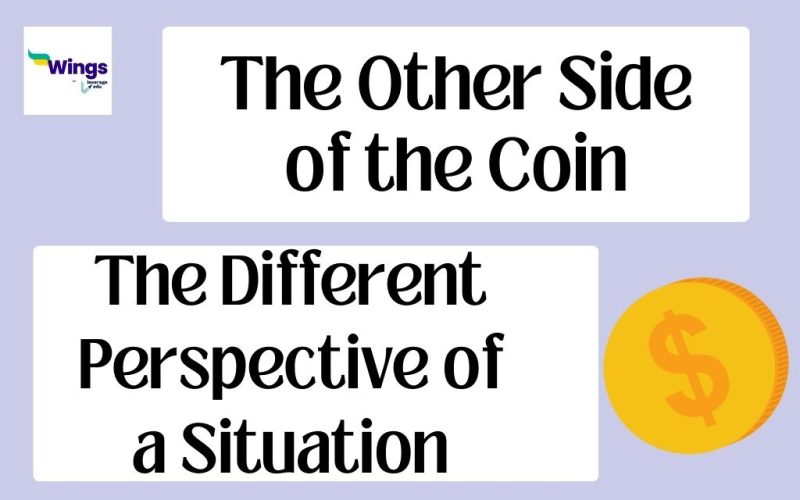The meaning of the idiom ‘the other side of the coin’ is looking at different aspects of a situation. This idiomatic expression suggests that there are always two sides of a situation. We must know the story of both ends before landing to a conclusion or passing any judgements. Whenever someone uses this idiom he/she wants to encourage the other person to analyze any argument or situation from different angles. In more simple words, this idiom refers to the other side of any situation.
Also read: When the Chips are Down Meaning, Examples and Synonyms
Usage with Examples
This idiom is used in a palace of conflict or critical situation. It suggests that there are two alternative perspectives to a single situation. Gaining knowledge about different perspectives is very important to get a complete understanding of the matter. This idiom serves as a reminder that there might be a hidden fact or variable interpretation and one should not immediately jump into conclusion without analyzing the whole situation.
Given below are some examples of this idiom:
- Merging the teams might elevate the sales rate but the other side of the coin is overburdening the employees.
- I like black cars but the other side of the coin is, it gets heated up faster.
- Reema wants to be in a relationship but the other side of the coin is she is too short-tempered to be handled by any person.
Also read: Useful idioms with Examples, Sentences and Meaning
Synonyms and Similar Words to The Other Side of the Coin
Mentioned below are some synonyms and related words for the other side of the coin:
- Flip-side
- Contra-position
- Two-edges of the sword
- Different perspective
The Other Side of the Coin Meaning Quiz
She got promoted to Principal Software Engineer, but the other side of the coin is:
- Responsibilities and expectations are increased
- She will not have to do a lot of work
Ans: a. Responsibilities and expectations are increased
This was all about the idiom ‘the other side of the coin’ meaning and examples. Hope you understood the concept where it’s used. For more such blogs, follow Leverage Edu.
 One app for all your study abroad needs
One app for all your study abroad needs














 45,000+ students realised their study abroad dream with us. Take the first step today.
45,000+ students realised their study abroad dream with us. Take the first step today.

